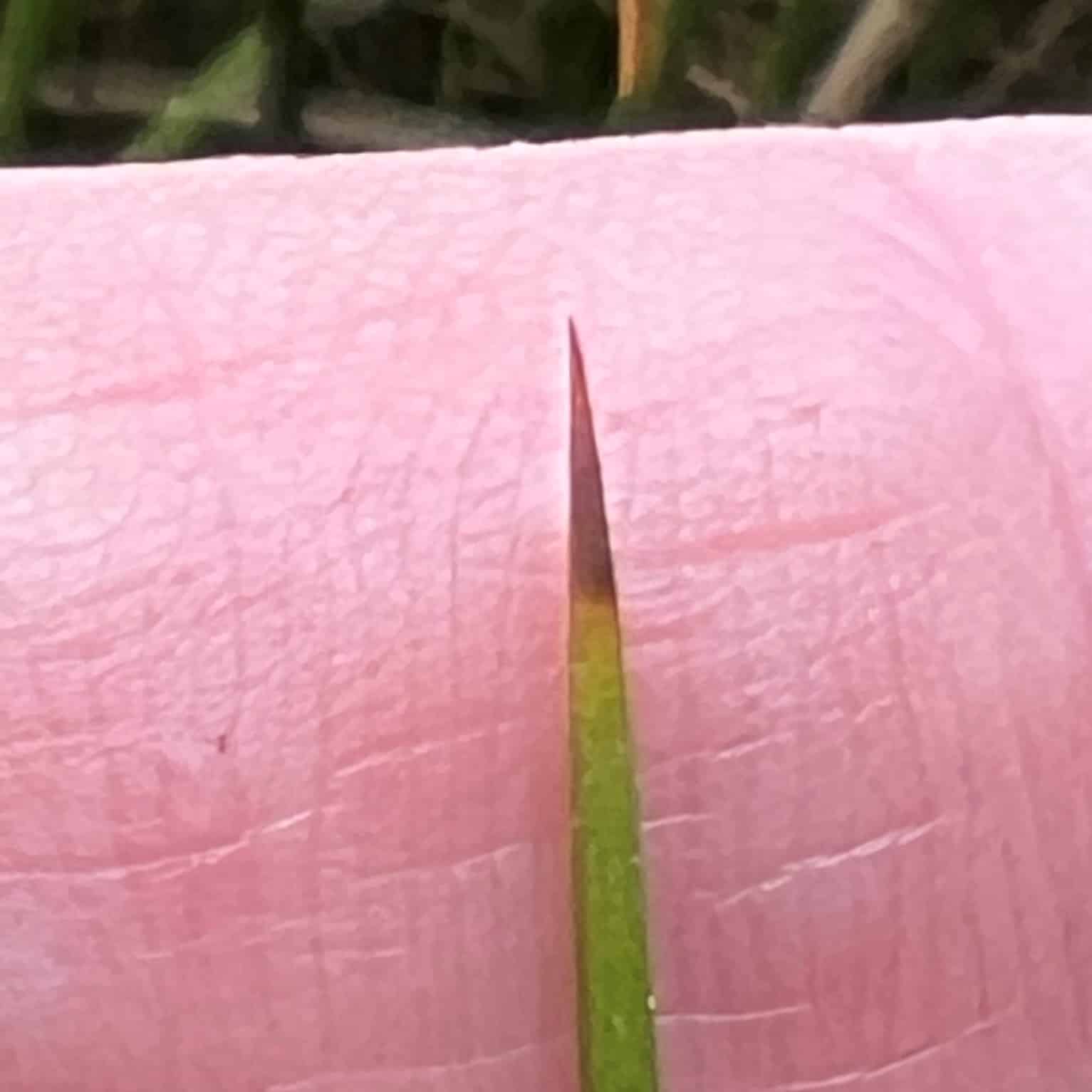Tidal marshes of the northern Gulf of Mexico are dominated by one species of plant – Black Needlerush. If you pay any attention as you drive by or over coastal marshes, you have seen the vast stands of this dark-colored reed. From that vantage point, they look benign enough. For those of us that have roamed these marshes, we have a different perspective and understanding of its common and scientific names.
Black Needlerush is known scientifically as Juncus roemerianus. The ethnology of its species name is unknown, as far as I could find, but hints at its main characteristic. But the sharp tips that define its common name, only hint at how this tidal marsh plant manages the challenging conditions of tidal marshes. All tidal marsh plants have evolved to cope with the regular rise and fall of tides and fluctuations in salinity, often changing rapidly after heavy rains. Here is part of the story of how Black Needlerush thrives and dominates our marshes.
As a tidal marsh researcher, I spent many a day walking through these marshes, trying to avoid being stabbed by the dry, sharp tips. Getting poked in your eye by one of these spears is a real danger. But eyes are not the only body parts that can be reached. In searching for clams and other critters buried in the mud around these plants, the sharp tips of young emerging leaves often ended up under my fingernails! They are sharp from the beginning – and here is why.

The growth habit of this species is one of a plant basically lying on its side – its main stem or rhizome is buried in the mud and grows out horizontally, with a sharp buried shoot leading the way. Roots grow downward. Leaves grow upwards, from a basal meristem (a zone of rapid cell growth). The sharp tip is, therefore, the oldest part of any leaf and the first to break the surface of the mud. When you find an isolated rhizome, a progression of old to young leaves is evident by their length along the stem, each leaf living a few years. Woe is he or she who encounters the youngest of these leaves when digging for clams!
This growth habit helps explain the role of the sharp leaf tips, which help them emerge through the mud. The horizontal nature of the rhizome gives this plant a competitive advantage over other plants. Stands of Juncus become packed with rhizomes growing out in many directions, making it hard for other plants to gain a foothold. The battle for space in Juncus marshes is largely below the surface of the mud, rather than what grows above.
This species also has an interesting way to deal with the salts of coastal waters. Excess salt is moved (translocated) from the actively growing younger leaves to the older, dying leaves through the buried rhizome. Problem solved. But there is one more aspect of this species that is different from other salt marsh plants. Juncus grows best in cooler times of the year and blooms in late winter. Within the world of plants, some grow best in cooler weather, others thriving in hotter, more humid conditions.
There are always interesting tidbits about the ways that plants and animals evolve to survive and thrive in their respective habitats. For Juncus, its sharp tips are only part of its story.
Hope to see you in our great outdoors!
Photos by Mark W. LaSalle